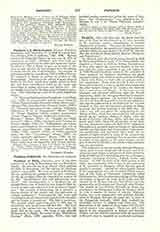

Paulinus a S. Bartholomaeo (PHILIP WESDIN), missionary and Orientalist, b. at Hoff in Lower Austria, April 25, 1748; d. in Rome, January 7, 1806. Having entered the Carmelite Order, he was sent in 1774 as missionary to India (Malabar) and there was appointed vicar general of his order and Apostolic visitor. Recalled in 1789 to Rome to give an account of the state of that mission, he was charged with the edition of books for the use of missionaries. On account of political troubles he stayed from 1798 to 1800 at Vienna. He returned to Rome as prefect of studies at the Propaganda. Paulinus is the author of many learned books on the East, which were highly valued in their day and have contributed much to the study and knowledge of Indian literature and Indian life. We are indebted to him for the first printed Sanskrit grammar. The following are some of his more important works:
(I) “Systema brahmanicum liturgicum, mythologicum, civile, ex monumentis indices musei Borgiani Velitris dissertationibus historico-criticis illustratum” (Rome, 1791), translated into German (Gotha, 1797);
(2) “Examen historicocriticum codicum indicorum bibliothecae S. C. de Propaganda” (Rome, 1792);
(3) “Musei Borgiani Velitris codices manuscripti avenses, Peguani, Siamici, Malabarici, Indostani. illustrati” (Rome, 1793); (4) “Viaggio alle Indie orientali” (Rome, 1796), translated into German by Forster (Berlin, 1798); (5) “Sidharubam, seu Grammatica sanscridamica, cui accedit dissert. hist. crit. in linguam sanscridamicam vulgo Samscret dictam” (Rome, 1799), another edition of which appeared under the title “Vyacaranam” (Rome, 1804); (6) “India orientalis christiana” (Rome, 1794), an important work for the history of missions in India. Other works bear on linguistics and church history.
LIVARIUS OLIGER

